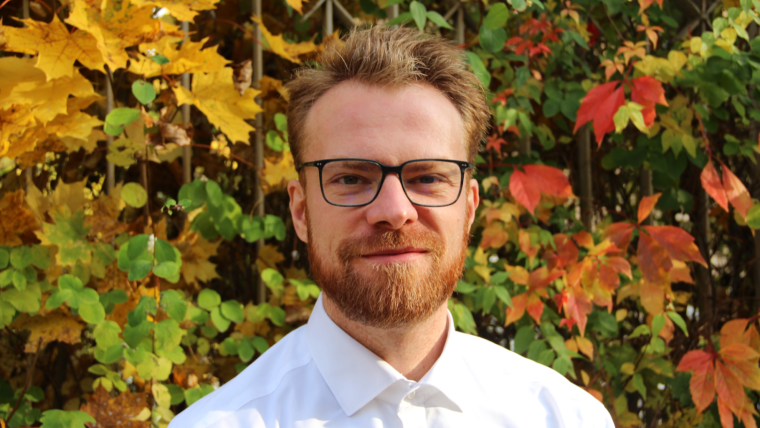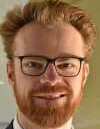
Jun. Prof. Christian Franke.
Image: Anne Günther (University of Jena)Jun. Prof. Dr. Christian FRANKE
Email: christian.franke@uni-jena.de
Phone: +49 3641-9-47112
From 2006 until 2012, Professor Franke studied physics at the University of Würzburg. Afterwards, he joined the group of Prof. Markus Sauer at the Biocenter Würzburg to do his PhD work in methods development for quantitative super-resolution microscopy. In 2017, he finished his PhD work and started his Postdoctoral research in applied super-resolution microscopy at the Max Planck Institute of Molecular Cell Biology and Genetics Dresden in the department of Prof. Dr. Marino Zerial. In November 2020 he started as an Assistant Professor of Digitized Experimental Microscopy at the Institute of Applied Optics and Biophysics (IAOB) of the Friedrich Schiller University Jena.
Research Area and Methods
The newly established research group of Christian Franke is focused on the development of advanced optical and computational tools for the quantitative study of (cell-) biological questions. On one side, we work to advance super-resolution microscopy methods like single-molecule localization microscopy (SMLM, e.g. dSTORM, PALM) and random structured illumination microscopy (nanoSpeck3D) to quantitatively study the structure-function relationship of sub-cellular (trafficking) organelles, e.g. endosomes, with three-dimensional nanometer resolution. Here, we create novel hard- and software tools to push the limits of 3D volume, colour and time resolution. For this, we have home-built microscopes in our labs in the Abbeanum and are in close collaboration with the Eggeling group at ZAF and Leibniz-IPHT, providing a large range of complementary microscope setups. Recently, we branched out into macroscopic measurements of 3D volumes by stereophotogrammetry (Dr. Andreas Stark), also utilizing structured illumination, with which we can now measure objects on the centimeter to micrometer scale, thus bridging dimensions between the macro- and nanoscopic world.
Teaching Fields
Main teaching activities include lectures (Physical optics and Optical engineering) and exercises within the interdisciplinary M.Sc. Medical Photonics eligible also for M.Sc. Photonics and M.Sc. Physics students, as well as Research Labwork projects in Physics and Photonics. Further, scientific assistants (HiWis), Bachelor and Master as well as PhD students are always welcome and supported through various research projects.
Recent Research Results
Recent research includes the development of quantitative tools for novel 3D SMLM approaches [1-3], correlative multi-colour SMLM and volumetric electron tomography (superCLEM) [4] and their application to cell-biological questions [3, 4-6]. For example, we could visualize for the first time the molecular escape of mRNA molecules, delivered by lipid nanoparticles from endosomal recycling tubules at the nanometer scale with multi-colour dSTORM [5] and help to understand part of the fine-structure in developing liver tissue [6]. We also found a novel way of performing macroscopic 3D measurements with a monocular, miniaturized structured-illumination system [7].
[1] Franke et al., Nature Methods 14, 41 (2017).
[2] Franke et al., Nature Methods 15, 990 (2018).
[3] Franke et al., Commun. Biol. 5, 218 (2022).
[4] Franke et al., Traffic 20, 601 (2019).
[5] Paramasivam et al., J. Cell. Biol. 221, e202110137 (2022).
[6] Belicova et al., J. Cell Biol. 220, e202103003 (2021).
[7] Stark et al., Light: Adv. Manufacturing (2022).
